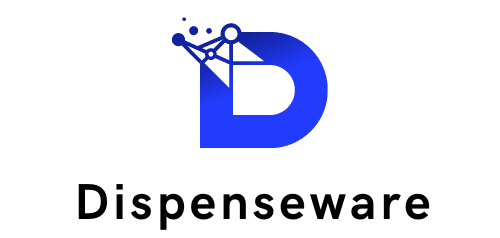As technology continues to advance, artificial intelligence (AI) is becoming an integral part of our daily lives. It’s in our smartphones, our cars, and even our homes. But nowhere is the impact of AI more evident than in the field of language translation. Digital language services powered by AI have the potential to revolutionize communication in multicultural societies, fostering enhanced understanding and cooperation among diverse linguistic groups. Let’s delve into the intricacies of this fascinating topic.
AI and Language Translation: A Match Made in Technology Heaven
Language translation is a crucial element in bridging cultural gaps and fostering effective communication. Traditionally, this task has been performed by human translators who painstakingly interpret text or speech from one language to another. However, with the advent of AI technologies, this process is being significantly enhanced – and in some cases, completely transformed.
A lire aussi : What impact does green energy have on reducing greenhouse gas emissions in industries?
In the world of translation, AI works by leveraging machine learning systems that have been trained on vast quantities of data from bilingual text corpora. These systems are capable of recognizing patterns and making educated guesses to translate new text accurately. Doing so eliminates the risk of human error and significantly speeds up the translation process. It’s the intersection of technology and language, where digital meets dialect.
The Benefits of AI-powered Translation for Multicultural Communication
In multicultural societies where diverse languages are spoken, communication barriers can often lead to misunderstandings and conflict. Traditional translation methods can be time-consuming and expensive, making them inaccessible to many people. AI-powered translation services, on the other hand, are quick, affordable, and readily available, effectively democratizing the translation process.
Lire également : How does sustainable urban planning promote affordable housing and inclusivity?
AI-powered translation can also be invaluable in educational settings. For instance, teachers can use these technologies to communicate with students who are learning English or other second languages. It can also be a useful tool for teaching content in a multicultural classroom, enabling educators to provide instruction in the students’ native languages. This approach isn’t just about language; it’s about cultural sensitivity and inclusivity in education.
AI-driven Translation: The Future of Global Communication
AI isn’t just changing the way we translate languages; it’s redefining how we communicate on a global scale. As AI technologies continue to improve, we can expect to see increasingly accurate and nuanced translations. Moreover, these technologies are likely to become more integrated into our daily lives, further facilitating communication in multicultural societies.
Imagine a future where every smartphone comes with a built-in, AI-powered translator capable of accurately interpreting any language in real-time. This would not just enable easy communication between different linguistic groups, but also promote understanding and acceptance of diverse cultures. It’s a future where language is no longer a barrier, but a bridge to global cooperation and unity.
Overcoming the Challenges: Ensuring Quality and Cultural Sensitivity
Despite the numerous benefits of AI-driven translation, there are challenges that must be addressed. Machine learning systems, as advanced as they are, can still make mistakes. They may misinterpret idioms, struggle with cultural references, or miss the subtle nuances that human translators can capture.
To overcome this, the next generation of AI translation technologies needs to be designed with an understanding of the cultural contexts of different languages. This includes not just the literal meanings of words, but their connotations, idioms, and cultural references. By doing so, these technologies can provide translations that are not just accurate, but also culturally sensitive.
The Role of Humans in the Age of AI Translation
Despite the rapid progress in AI translation, human input remains crucial. While AI can handle straightforward translations, complex texts still require human oversight. Moreover, human translators play a critical role in training AI systems, providing the bilingual data that these systems learn from.
In the long run, AI is not likely to replace human translators entirely. Instead, it will serve as a tool that can assist them in their work, enabling them to translate more quickly and accurately. Ultimately, it’s about the synergy between human expertise and AI efficiency. The future of translation isn’t just about technology; it’s about the collaboration between humans and machines in the service of better, more effective communication.
AI and Machine Translation in the Digital Age
The emergence of AI and machine translation has marked a significant milestone in the digital age. These technologies have revolutionized the way we communicate, breaking down language barriers and opening new avenues for cross-cultural interaction.
Machine translation is a subfield of computational linguistics that uses software to translate text or speech from one language to another. With the introduction of AI, this process has become more accurate and reliable. AI-powered translation tools use machine learning algorithms to analyze large amounts of bilingual data and learn from it, enhancing their ability to provide accurate translations.
These technologies have diverse applications, from social media platforms to business communication. On social media, for instance, AI-driven translation allows users from different linguistic backgrounds to interact seamlessly, promoting cultural diversity and inclusivity. In the business world, these tools can facilitate effective communication between international partners, overcoming language barriers that could otherwise hinder collaboration.
In the field of education, AI-powered translation aids in language learning and teaching. Teachers can use these tools to deliver content in students’ native languages, promoting understanding and engagement. Similarly, students can leverage these technologies to learn English or other second languages, enhancing their language proficiency and cultural sensitivity.
Moreover, AI-powered translation services can greatly benefit individuals with disabilities by providing them with accessible content in a language they are comfortable with. This can go a long way in promoting inclusivity and ensuring equal access to information.
AI-Generated Content and the Future of Language Translation
AI-generated content is another exciting development in the world of language translation. This involves the use of AI technologies to create original content in different languages. Unlike traditional translation, which involves converting text from one language to another, AI-generated content involves creating new text based on the information in the source language.
This process is made possible by AI’s ability to understand the semantic and syntactic structures of languages. It can analyze the contextual clues and stylistic nuances of the source text and use this information to generate content that is not just accurate, but also culturally sensitive and stylistically appropriate.
AI-generated content has numerous applications, from content creation for websites to real-time translation of speeches and conversations. It’s a game-changer for businesses operating in multicultural societies, enabling them to produce content that resonates with their diverse audience.
In conclusion, as AI continues to evolve, we can expect to see more breakthroughs in language translation. AI is not just a tool for overcoming language barriers; it’s a catalyst for fostering cultural understanding, promoting inclusivity, and facilitating effective communication in our increasingly globalized world. The future of language translation is bright, and it’s powered by artificial intelligence.






